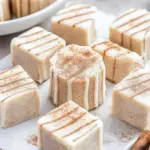This Roman classic, Spaghetti alla Carbonara, is a perfect marriage of simple ingredients that pack an extraordinary punch of flavor. With crispy guanciale, creamy egg and cheese sauce, and perfectly cooked pasta, it embodies the soul of traditional Italian cooking.
What makes this dish so beloved is its simplicity and elegance no cream, no complicated steps, just pure, rich flavor built from quality ingredients and technique. It’s the ultimate comfort food for pasta lovers and a timeless recipe that’s easy enough for weeknights yet impressive for guests.
Full Recipe
Ingredients:
-
12 oz (340 g) spaghetti
-
4 oz (115 g) guanciale (or pancetta as substitute), diced
-
3 large eggs
-
1 cup (100 g) Pecorino Romano cheese, finely grated
-
Freshly ground black pepper
-
Salt, to taste
Directions:
-
Bring a large pot of salted water to a boil. Cook the spaghetti until al dente according to package instructions, reserving about 1 cup of pasta water before draining.
-
In a large skillet over medium heat, cook the diced guanciale until crispy and golden, about 5-7 minutes. Remove from heat.
-
In a mixing bowl, whisk together eggs, grated Pecorino Romano, and a generous amount of freshly ground black pepper until smooth.
-
Add the hot, drained spaghetti to the skillet with guanciale (off the heat to avoid scrambling the eggs). Toss well to combine.
-
Slowly pour the egg and cheese mixture over the pasta, stirring quickly and continuously to create a creamy sauce that coats the spaghetti. Add reserved pasta water a little at a time if needed to reach the perfect silky consistency.
-
Serve immediately with extra Pecorino Romano and black pepper on top.
Prep Time: 10 minutes | Cooking Time: 15 minutes | Total Time: 25 minutes
Kcal: Approximately 550 kcal per serving | Servings: 4
The Art and Evolution of Spaghetti alla Carbonara
Spaghetti alla Carbonara is more than just a pasta dish it’s a deeply rooted expression of Roman culinary heritage. Loved across the globe for its simplicity and rich, creamy flavor, Carbonara has inspired passionate debate, meticulous technique, and, more recently, inventive adaptations that elevate it while still honoring its origins. Chef Vincenzo Prosperi of Vincenzo’s Plate is one such torchbearer. His 2023 take on Carbonara introduces modern refinements while maintaining the timeless authenticity that defines the dish.
A Dish Steeped in Roman Tradition
Carbonara traces its roots to the Lazio region of Italy, particularly Rome, where its ingredients reflect the local palate: guanciale, pecorino romano, organic eggs, and black pepper. Unlike many modern interpretations that often incorporate cream or garlic, the traditional Roman version achieves its luxurious texture strictly through the emulsification of cheese, egg yolks, and pasta water.
Vincenzo’s Carbonara honors this tradition while embracing evolving techniques to achieve optimal creaminess. His careful balance of innovation and respect for culinary heritage reveals the essence of Italian cooking a profound love for food that’s simple, seasonal, and steeped in history.
A Revolutionary Yet Respectful Take
Vincenzo describes himself as the instigator of a “Carbonara revolution,” challenging himself each year to improve upon a dish he’s already perfected countless times. What distinguishes his 2023 version is a new technique he learned in Rome: cooking with steam heat.
This method gently heats the egg and cheese mixture using the residual steam from pasta water. Instead of placing the sauce over direct flame where it risks scrambling the eggs or burning this technique allows for a gradual, controlled thickening of the sauce. The result? A velvety, glossy coating that clings to every strand of pasta, free from clumps or separation.
This innovation proves that even within the confines of tradition, there’s room for creativity and progress as long as the spirit of the dish is preserved.
Texture Matters: Cream Meets Crunch
A key highlight of Vincenzo’s Carbonara is the contrast between creamy sauce and crunchy guanciale. By separating a portion of the cooked guanciale and reserving it for plating, he ensures a final texture that engages all the senses.
The crisp guanciale adds a savory, crackling counterpoint to the rich pasta, while freshly cracked black pepper heightens the dish’s complexity. This attention to textural nuance is what elevates a good Carbonara to an unforgettable one.
Pasta Shape and Personalization
Although spaghetti is the quintessential pasta shape for Carbonara, Vincenzo encourages experimentation. He notes that thicker pastas like bucatini or spaghettoni quadrato work exceptionally well, thanks to their ability to hold onto the creamy sauce.
Interestingly, he cautions against using fresh egg pasta, as its richness can make the dish overly heavy and harder to digest. This tip underlines an important philosophy: more is not always better in Italian cooking. Instead, balance and harmony are the goals.
By understanding which pasta shapes complement the sauce and texture, home cooks can personalize their Carbonara while staying rooted in Roman tradition.
The Role of Ingredients: Simplicity with Standards
While the recipe itself is straightforward, the quality of ingredients is paramount. Vincenzo uses organic eggs, aged pecorino romano, and authentic guanciale to achieve the best results. He even outlines the optimal pecorino-to-pasta ratio: at least 30 grams of cheese for every 100 grams of pasta.
In a culinary world increasingly drawn to convenience, these reminders about ingredient sourcing reinforce the slow food ethos: know your ingredients, treat them with care, and let them speak for themselves.
Sustainability in the Kitchen
An insightful aspect of Vincenzo’s approach is his commitment to reducing food waste. His recipe calls for using only the egg yolks, leaving behind three egg whites. Rather than discarding them, he suggests reusing them in other dishes like classic Amaretti cookies.
This tip is more than a clever kitchen hack it reflects a broader value system of mindful cooking, where every ingredient is respected and utilized. It’s another way Vincenzo bridges tradition with modern values, encouraging home cooks to embrace sustainability without sacrificing taste.
Plating and Presentation: The Final Touch
Carbonara is not just about how it tastes it’s about how it’s served. Vincenzo encourages plating the pasta with an extra sprinkle of pecorino, spoonfuls of leftover sauce, and a final layer of crispy guanciale. Generous cracks of black pepper round out the presentation, providing visual appeal and aromatic intensity.
This careful attention to plating serves a dual purpose. It enhances the dining experience and showcases the dish as a celebration a moment to savor rather than a meal to rush through.
Cultural Experience Beyond the Plate
Vincenzo doesn’t just teach how to cook Carbonara he offers a gateway into Italian culture. Through his recipe, storytelling, and even curated food tours like the “Italy Unexplored Tour,” he emphasizes that cuisine is not merely about ingredients or steps but about heritage, people, and passion.
Food, in this view, becomes a living tradition, one that evolves with each generation but never forgets its roots.
Conclusion:
Spaghetti alla Carbonara is deceptively simple. With just a few ingredients and no extravagant techniques, it relies on precision, patience, and an understanding of tradition. For those seeking more than just a recipe, Vincenzo’s Carbonara offers a culinary philosophy a reminder that food should nourish both body and soul. Whether you’re in a Roman trattoria or your home kitchen, the spirit of Carbonara invites you to slow down, pay attention, and enjoy the delicious harmony of Italy’s most beloved pasta dish.






